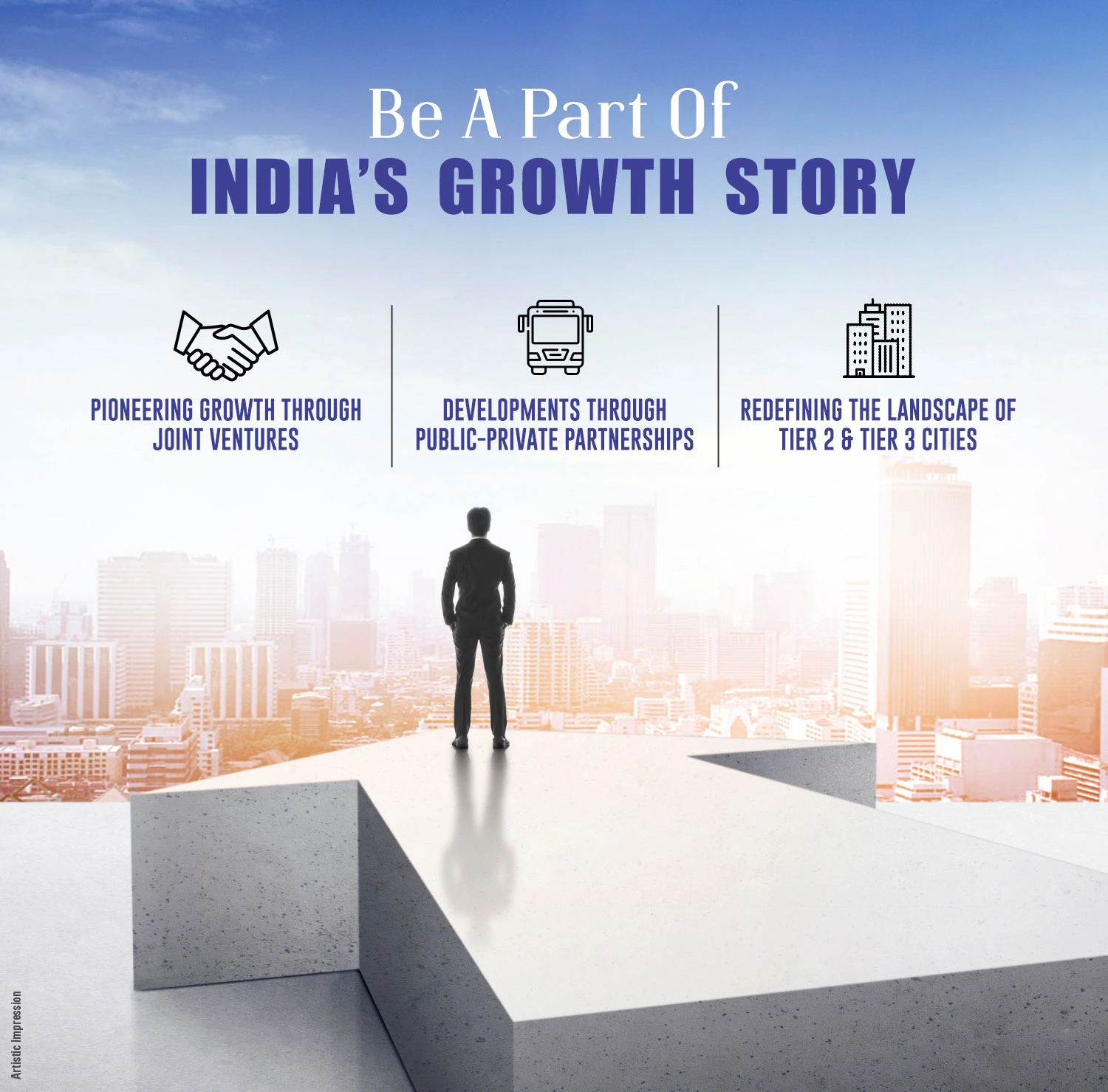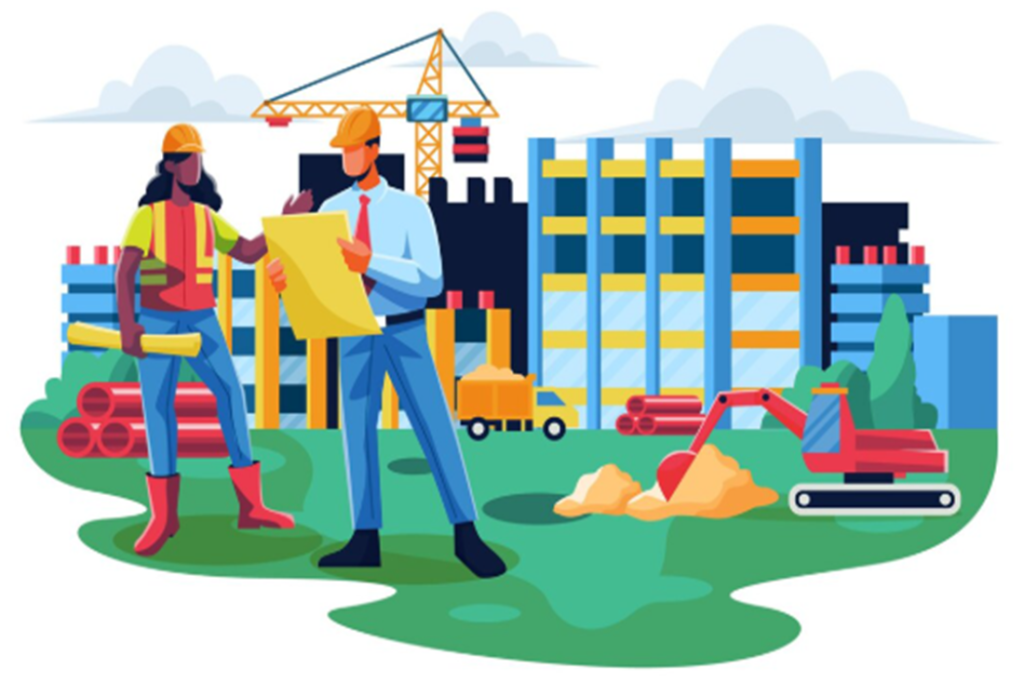
Transforming Urban Spaces: Benefits of Public Private Partnership in Real Estate
Public private partnerships (PPPs) are playing an increasingly vital role in India’s urban transformation. By combining government mandates and oversight with private sector agility, funding, and technical skill, these collaborations are redefining how cities grow, how public infrastructure improves, and how real estate delivers value for both investors and citizens. Omaxe, through its BeTogether brand, is a compelling example of how partnership models are generating high impact in urban spaces across multiple states.
What Are PPPs in Real Estate?
In simple terms, a public private partnership in real estate involves a deal where a private developer works with government bodies or public agencies to plan, invest in, build, and/or manage real estate or infrastructure (such as transit hubs, terminals, commercial zones). The government may provide land, regulatory clearances, or partial financing; the developer brings design, execution, commercial viability, and management capabilities.
Key Benefits of PPPs in Real Estate
Here are the benefits of public private partnership in real estate illustrated through Omaxe’s recent projects:
- Capital & Risk Sharing
Large infrastructure and commercial projects are expensive and involve many risks permitting, execution, operations. PPPs allow both government and private developer to share financial burden, risk of delays, and rewards. For instance, in Uttar Pradesh, BeTogether under Omaxe has secured the modernization of six major bus terminals under a PPP with the Uttar Pradesh State Road Transport Corporation (UPSRTC), with an investment of (~₹2,700 crore) expected to generate revenues over ₹4,700 crore. - Better Quality & Modern Amenities
Governments often work to bring public infrastructure up to higher standards. Through PPPs, private developers introduce modern amenities automated ticketing, digital displays, air-conditioned waiting halls, lifts, escalators, EV charging, advanced security, etc. This raises the user experience and encourages usage. BeTogether’s bus terminal modernization projects include all of these. - Faster Execution & Professional Management
Private developers generally have more streamlined processes, stronger project management, and better ability to mobilize resources. That means projects delivered faster. Omaxe’s BeTogether is leveraging this through its models to modernize bus terminals across several major cities like Lucknow, Prayagraj, Ghaziabad, Ayodhya, and more. - Integrated Land Use & Commercial Viability
PPP-driven real estate often includes commercial components (retail, food courts, shops, offices) within infrastructure hubs. These commercial elements help generate recurring revenue, supporting operations and maintenance, while also creating a localized economic ecosystem for jobs and businesses. BeTogether’s remodeled terminals include retail spaces, banquet halls, studio apartments, parking, etc. - Catalyst for Urban Development & Connectivity
Well-executed PPP real estate projects become anchor points for future urban growth. Improved terminals and transit hubs boost connectivity, encourage last-mile development, and raise property values in nearby areas. For example, bus terminals in Lucknow (Gomti Nagar & Amausi), Prayagraj, Ayodhya etc., being upgraded, are expected to enhance public transit and stimulate economic activity around them. - Enhanced Accountability and Maintenance
Private players have incentive to maintain quality, service levels, and ensure amenities are kept up to standards because their revenue (from commercial leases etc.) often depends on user satisfaction and usage levels. PPP contracts usually include clauses for ongoing operations, maintenance, uptime, etc. BeTogether’s PPP model includes features and monitoring to maintain high standards. - Financial Returns & Real Estate Appreciation
PPP projects offer strong financial upside for both the public entity (through improved services, revenue sharing, or value of land) and the private developer/investor through saleable/ leasable space. For example, BeTogether’s six terminal modernization projects have built-up area of ~70.80 lakh sq ft, saleable area ~45.59 lakh sq ft, with projected revenue of ₹4,700+ crore, showing how returns are structured.
BeTogether / Omaxe: PPP Projects as Models of Transformation
Omaxe, via BeTogether, is implementing several PPP real estate / infrastructure projects that are transforming urban spaces:
- Contract with UPSRTC to modernize six major bus terminals in Uttar Pradesh including cities like Lucknow (Gomti Nagar & Amausi), Ghaziabad, Prayagraj, Kaushambi, and Ayodhya. The scope includes transit infrastructure plus commercial and public amenities.
- These projects include features such as EV-charging stations, food courts, lifts, escalators, well-designed waiting areas, parking features that align with modern urban aspirations.
- Estimation shows large scale built up and saleable areas, showing that these are not just public service projects they are commercially and financially significant.
Challenges & How PPP Projects Must Be Managed
While PPPs offer many benefits, success depends on managing certain risks:
- Regulatory/clearance delays – land acquisition, environment, heritage etc.
- Financing & Project Cost Overruns – ensuring clear contracts, transparent financing, risk mitigation.
- Maintaining Standards Post-Completion – uptime, cleanliness, user experience, safety need continuous maintenance.
- Balancing Public Utility & Commercial Interests – overemphasis on commercial space should not degrade the public function.
Omaxe’s BeTogether seems aware of these, with well-planned agreements, well-featured amenities, and clear investment and revenue projections.
Policy Environment & Impacts
The Indian government has been promoting PPPs and infrastructure development through policies, incentives, and funding support. This trend gives confidence to private entities, reduces risk, and often facilitates faster clearance, favorable financing or subsidies. Projects under BeTogether align well with this push: transport infrastructure modernization, transit-oriented development, and commercial integration. These get better public acceptance, and often easier regulatory approvals.
Social & Long-Term Urban Growth Impacts
- Improved Commuter Experience & Mobility: Waiting rooms, digital info, efficient ticketing better public transport infrastructure enhances everyday lives.
- Jobs & Economic Activity: Both during construction and in retail/commercial component operations, local economies get a boost.
- Urban Renewal & Land Value Uplift: Neighborhoods around upgraded infrastructure often see real estate appreciation.
- Sustainability & Green Amenities: Features like EV charging points, better energy efficiency, safety, etc., contribute toward greener cities.
Conclusion
The landscape of urban real estate in India is evolving rapidly. When private developers partner with public agencies under well-structured PPP frameworks, they can deliver infrastructure that is high quality, commercially viable, and socially impactful. Omaxe’s BeTogether initiative exemplifies this by modernizing infrastructure like bus terminals, integrating commercial elements, and improving civic amenities. The benefits of public private partnership in real estate under this model are multifaceted: shared risk and finance, elevated standards, faster execution, economic returns, and improved urban life. As Indian cities continue to grow, more such projects are essential to shape sustainable, equitable, and dynamic urban futures.
FAQs
What is a Public Private Partnership (PPP) in real estate?
A PPP in real estate is a collaborative model where government bodies and private developers share resources, risks, and profits to create or upgrade infrastructure and urban projects.
What are the key benefits of public private partnership in real estate?
It enables shared financing, faster project completion, modern amenities, and long-term maintenance while reducing the financial burden on the public sector.
How do PPP projects improve urban spaces?
They integrate commercial zones, transport hubs, and public facilities, enhancing connectivity, generating jobs, and raising property values.
Why are developers like Omaxe focusing on PPP models?
Developers gain stable revenue opportunities, long-term leases, and the chance to build iconic projects that boost brand value.
Are PPP projects financially sustainable for the government?
Yes. Governments benefit from shared investment, improved infrastructure, and recurring revenue without fully bearing construction or maintenance costs.





